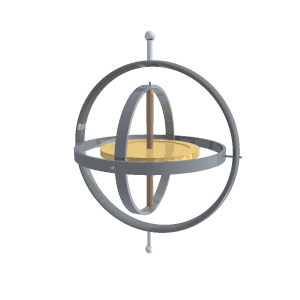Input Devices
Part A
What are the different sensors in your phone and what do they do? Conduct an experiment to measure and analyze the data for a sensor in a log and report your findings
Conduct an experiment to measure and analyze the data for a sensor in a log and report your findings

Different sensors in Mobile devices
1.Biometrics - Finger print sensor
Gone are the days of memorizing passwords and patterns to unlock your phone as many users prefer using the fingerprint scanner these days. Fingerprint sensor enables biometric verification to secure many smartphones today. It is a capacitive scanner that records your fingerprint electrically.When you put your finger on its surface, the ridges in your fingerprints touch the surface whereas the hollows between the ridges have a slight separation. In short, it measures the varying distances and pattern between the ridges on the surface of your finger. This smartphone sensor is quite useful in apps that require authentication such as mobile payment apps.


2.Accelerometer
An accelerometer detects acceleration, vibration, and tilt to determine movement and exact orientation along the three axes. Apps use this smartphone sensor to determine whether your phone is in portrait or landscape orientation.It can also tell if your phone screen is facing upward or downward. The accelerometer can also detect how fast your phone is moving in any linear direction.

3.Gyro sensor
Gyroscope also provides orientation details and direction like up/down and left/right but with greater precision like how much the device is tilted. This is where it differs from accelerometer — gyroscope can measure rotation too but the former cannot.So it can tell how much a smartphone has been rotated and in which direction. Popular apps like Pokemon Go and Google Sky Map use gyroscope sensor to determine the direction towards which our phone is pointed.

4.Proximity sensor
A proximity sensor makes use of an infrared LED and IR light detector to find out how close the phone is to an outside object. It used while making calls and when the phone is held to the face to make or receive a call, the sensor detects it and disables the touchscreen display to avoid unintended input through the skin.

5.GPS
Global Positioning System (GPS) units in smartphone communicate with the satellites to determine our precise location on Earth. The GPS technology doesn’t actually use internet data this is why we can find our location on maps even after losing the signals, but the map itself is blurry as it requires internet to load the details — this is how offline map works. GPS is used in all location-based apps like Uber and Google Maps.
6.Ambient light sensor
The light sensor detects the lighting levels in the vicinity to adjust the display brightness accordingly. It is used in Automatic Brightness Adjuster to decrease or increase the brightness of the smartphone screen based on the availability of light.
7.Microphone (sound sensor)
The microphone is basically a sound sensor that detects and measures the loudness of sound. While there are different types of microphone sensors available, smartphones generally use micro-sized electret microphones.Apart from making and receiving calls, it is used for voice search and voice commands for digital assistant apps like Google Assistant, Siri, Cortana, etc
8.Magenetometer (compass direction)
Our smartphones are equipped with magnetometer which we commonly recognize as a compass. It can detect magnetic fields, so the compass app in phones uses this smartphone sensor to point at the planet’s north pole.Whenever you open Google Maps or Apple Maps, the magnetometer is fired up to determine which way the map should be. This sensor can detect metal very well, so it is used in metal detector apps too.
Conduct an experiment to measure and analyze the data for a sensor in a log and report your findings
Using Sensor Kinetics mobile app which demonstrates the use of the accelerometer, gyroscope and the rotation sensor to control a tilt based view navigation. It also demonstrates the operation of the magnetic sensor, the linear acceleration sensor and the gravity sensor within special graphical displays.
Sensor Kinetics® demonstrates the physics of gravity, acceleration, rotation, magnetism and more as these forces are measured by your phone or tablet. The app includes comprehensive help files with easy to understand information and experiments you can perform with the sensors.Sensor Kinetics® relates to gyroscope and accelerometer data logging and to the science and physics of the magnetometer, the pressure sensor, the relative humidity sensor, the light sensor, the linear acceleration sensor, the temperature sensor, the proximity sensor, and the gravity sensor.


Measuring the X,Y and Z axis data points with change in position of the mobile phone
Observations-Change in the position values were discovered while it was in movement whereas when the position of the phone becomes static the data points create a linear graph
This sensor can be used in real life scenario the above mentions purposes
1. The levelling the surfaces during wood or even cement works where preciosion and balance is required to fix two or more entities parallelly or perpendiculary
2.Come in handy for the people in building conservation sites where various small to large
Part B
Measuring the humidity and temprature readings using temprature sensor in an arduino circuit and analyzing the logs.Conduct an experiment to measure and analyze the data for a sensor in a log and report your findings
adding temprature sensor to a microcontroller board and read its value in compiler.


Possible applications of temprature and humidity senso readings are
Passive cooling technique - can be in home or office space to know the temprature difference between indoor and outdoor environment, and adjust the air and ventilation systems accordingly. Several architecture elements can be added in the exteriors and interiors - examples for summer days the air circulation in the interiors is essential to maitain cooling temprature.
Code for the temprature sensor